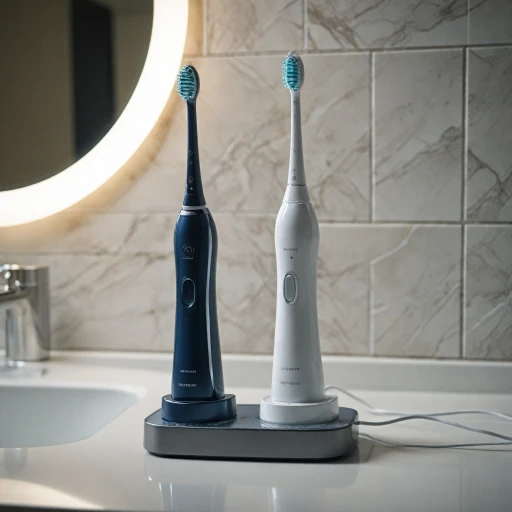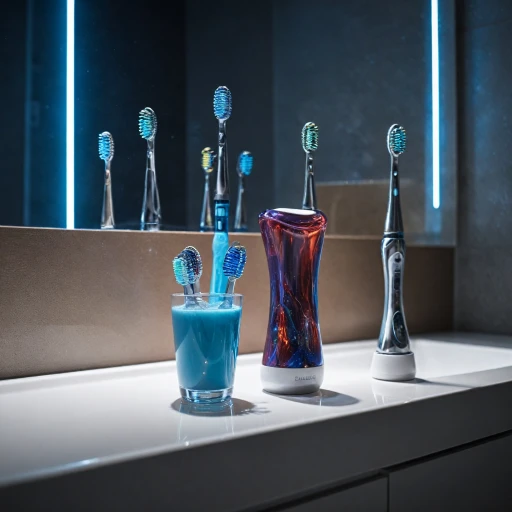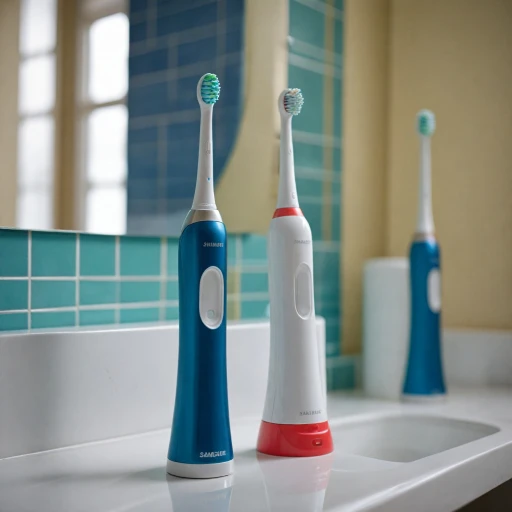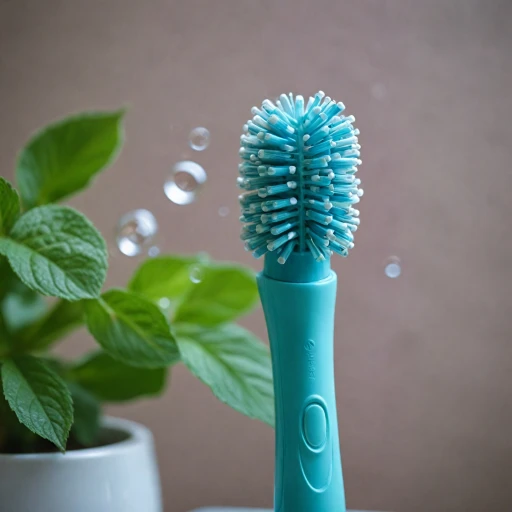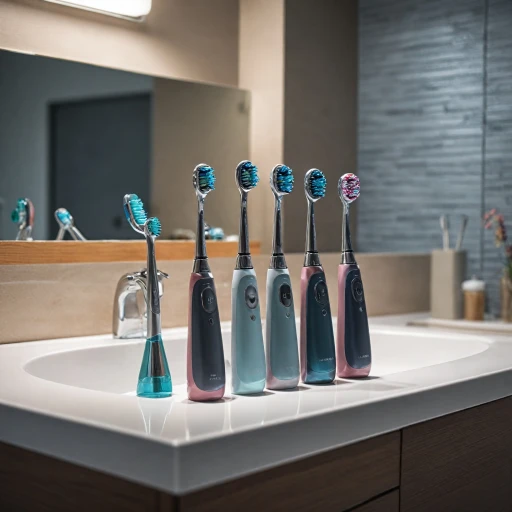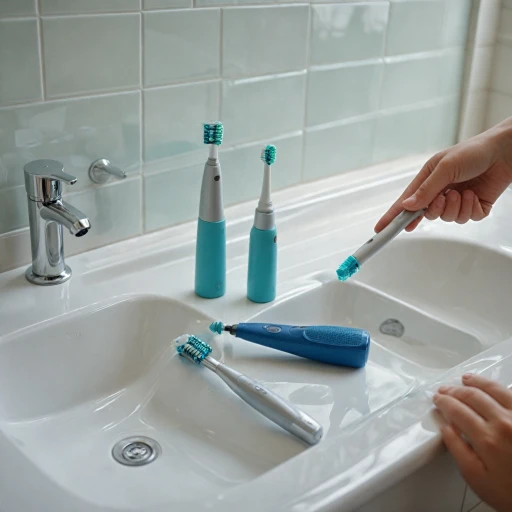
Understanding Ultrasonic Technology
The Science Behind Ultrasonic Cleaning
Ultrasonic technology in electric toothbrushes utilizes ultrasound waves to clean and maintain oral hygiene. Unlike manual toothbrushes that rely on mechanical scrubbing, these advanced devices harness sound waves exceeding the speed of traditional cleaning methods. With movements up to 192 million per minute, the ultrasonic toothbrush focuses on breaking down plaque and biofilm on the teeth and gums.
Electric toothbrushes like the Waterpik Sonic-Fusion 2.0 integrate both mechanical and ultrasonic technologies, offering a comprehensive solution for oral health. The ultrasonic toothbrush operates by generating minimal motion, targeting the microscopic level of dental plaque without the need for vigorous brushing.
This method stands out due to its non-abrasive nature, allowing for effective cleaning while avoiding the potential wear on enamel often seen with manual brushing. Ultrasonic toothbrushes can be particularly beneficial for sensitive teeth and gums, enhancing oral care without compromising comfort.
Comparing Ultrasonic and Sonic Toothbrushes
Breaking Down the Core Features of Ultrasonic and Sonic Toothbrushes
When stepping into the realm of electric toothbrushes, one is bound to encounter the concept of a sonic brush head. The technology behind both ultrasonic and sonic toothbrushes is quite fascinating and understanding the differences can make a profound impact on your oral health routine.
Sonic toothbrushes operate by sweeping at high speeds, producing anywhere between 24,000 to 48,000 movements per minute, thanks to sound waves (not to be confused with being entirely sound-based). This rapid vibrational motion allows the brush to agitate the fluids in the mouth, pushing them into gaps between the teeth and along the gum line. This makes it ideal for effective removal of biofilm on teeth.
In contrast, ultrasonic toothbrushes, such as the Emmi-Dent, employ ultrasound frequency to achieve an astounding 1.6 million movements per minute. This allows the toothbrush to disrupt and dislodge plaque and bacteria at a deeper level, which is not possible with manual brushing. The cleaning prowess is not due to physical scrubbing, but rather the way ultrasound energizes microscopic bubbles to thoroughly clean teeth and gums.
Key Distinctions to Consider
- Speed and Movements: Sonic toothbrushes are built for fast physical brushing, while ultrasonic models excel in vibration technology, raising it to higher frequencies possibly resulting in ultra whitening effects.
- Cleaning Mechanism: Sonic toothbrushes rely on high-speed bristle movements to mechanically clean teeth. Ultrasonic toothbrushes can dismantle plaque at a molecular level, focusing on oral hygiene in a non-contact way.
- Oral Health Target: Both types effectively contribute to dental cleaning, but ultrasonic technology may be more suited to addressing dental plaques that are hard to reach, making it a suitable choice for those looking to enhance their current oral care routine.
While both sonic and ultrasonic versions offer free shipping options, each has unique features that cater to different dental needs. By distinguishing benefits between these toothbrushes, you can tailor your dental hygiene to best suit your personal requirements.
Benefits of Using an Ultrasonic Toothbrush
The Advantages of Enhancing Oral Hygiene
Using an ultrasonic toothbrush can transform your dental routine, providing cleaning results that far exceed manual brushing. The unique use of ultrasound waves, distinct from the rapid vibrations seen in sonic toothbrushes, allows for a deeper clean by disrupting the biofilm—the slimy layer of bacteria and plaque—on the surface of your teeth. But how exactly does this benefit your overall oral health?- Superior Plaque Removal: Ultrasonic toothbrushes excel at removing plaque, thanks to their ability to generate high-frequency movements—more than the typical sonic toothbrush. This translates to efficiently cleaning teeth surfaces and hard-to-reach areas, which is a step up from both manual brushing and other electric toothbrushes.
- Protection for Sensitive Gums: With controlled intensity, these toothbrushes offer a gentle, yet effective, teeth and gum cleaning experience that minimizes the risk of irritation—a concern often associated with aggressive brushing practices.
- Whitening Benefits: Even if your goal isn't ultra whitening, the effective removal of surface stains helps to visibly brighten your smile, giving the appearance of whiter teeth over time.
- Innovation and Smart Features: Top brands like Emmi Dent and Philips Sonicare have integrated advanced features in certain models. These include customizable brush heads and varied brushing modes that cater to specific dental needs—allowing for a personalized brushing experience.
- Improved Oral Health: Consistent use can bolster oral hygiene, potentially reducing the frequency of dental visits and the likelihood of oral diseases.
Potential Drawbacks and Considerations
Navigating Ultrasonic Toothbrush Limitations
While the ultrasonic toothbrush is praised for its innovative cleaning capabilities, there are some considerations to keep in mind before making a switch from manual or other electric toothbrushes like the Philips Sonicare or sonic toothbrushes. Understanding these potential drawbacks is essential in making an informed decision regarding your oral care routine.- Cost Concerns: Ultrasonic toothbrushes, including specialized brands like Emmi Dent, can be more expensive than traditional electric toothbrushes or manual options. This cost not only reflects the advanced technology but also the premium features offered. It’s important to assess whether the investment aligns with your oral health priorities and budget.
- Availability and Replacement Parts: Finding the best brush head for your ultrasonic toothbrush can be a challenge, and it’s crucial to understand the availability of brush heads and other replacement parts. Some users may experience difficulties in accessing components for certain models, which can impact the longevity of the toothbrush.
- Adjusting to New Brushing Habits: Transitioning to an ultrasonic electric toothbrush requires adapting to a different brushing technique. Unlike manual counterparts that demand physical brushing motions, ultrasonic toothbrushes rely on gentle movements and ultrasound technology, which can take some time to get used to.
- Effectiveness for All Dental Needs: While ultrasonic toothbrushes excel in removing plaque and aiding in oral hygiene through biofilm disruption, they might not entirely substitute for other oral care practices. Regular flossing, for instance, remains essential for thorough cleaning between teeth and gums, as the brush bristles may not reach those tight spaces.
Choosing the Right Ultrasonic Toothbrush
Factors to Consider for an Ultrasonic Toothbrush
When deciding on an ultrasonic toothbrush, several factors should be taken into account to ensure the best choice for your oral hygiene needs. With the variety of toothbrushes available, here are some key considerations:- Brushing Performance and Technology: The effectiveness of an ultrasonic toothbrush often depends on its ability to generate movements exceeding 1.6 MHz, ensuring optimal cleaning. Consider emmi dent models known for producing high-frequency ultrasound that breaks down biofilm and plaque without physical scrubbing.
- Brush Heads and Compatibility: Check the availability and compatibility of brush heads for your chosen model. Some brands, such as Philips Sonicare, offer a wide range of brush heads tailored to specific needs like teeth whitening and gum care.
- Ease of Use and Maintenance: Look for features that promote easy handling, such as ergonomic designs, and convenient maintenance like rechargeable batteries or easy brush head replacements.
- Price and Shipping Options: Prices for ultrasonic toothbrushes can vary widely, so consider your budget. Some retailers offer free shipping, which can add value to your purchase.
- Additional Features and Customization: Some ultrasonic toothbrush models include features like timer settings, pressure sensors, and multiple brushing modes, providing a tailored oral hygiene experience.
User Experiences and Reviews
Real User Insights: Experiences with Ultrasonic Toothbrushes
The diverse experiences shared by users of ultrasonic toothbrushes can provide valuable insights when deciding whether to make the switch from manual or conventional electric options. Here are some common themes and observations reported by users:- Enhanced Oral Hygiene: Many users have stated that ultrasonic toothbrushes significantly improve their oral hygiene routine. The high-frequency ultrasound technology is often credited with breaking down dental biofilm and plaque more effectively than manual or regular electric toothbrushes, thus leading to cleaner teeth and healthier gums.
- Teeth Whitening Effects: Another frequently noted benefit is the visible improvement in tooth whiteness. This may be attributed to the toothbrush’s ability to clean tooth surfaces thoroughly, helping remove surface stains and enhance overall appearance.
- Plaque and Biofilm Reduction: Users have highlighted that ultrasonic toothbrushes are particularly effective in reducing plaque and biofilm build-up. This is especially beneficial in maintaining long-term oral health and preventing issues such as gingivitis and cavities.
- Efficient Cleaning: The gentle yet effective brushing motion provided by ultrasonic electric toothbrushes is praised for offering an efficient cleaning experience without damaging teeth or gums. Users appreciate the ability to achieve optimal oral hygiene results with minimal effort, thanks to the technology behind these brushes.
- Comfort and Ease of Use: Ultrasonic toothbrush users often mention the comfort and ease of use. The ergonomic design of brushes and the option for various brush heads make them suitable for different dental care needs, enhancing the overall tooth brushing experience.


